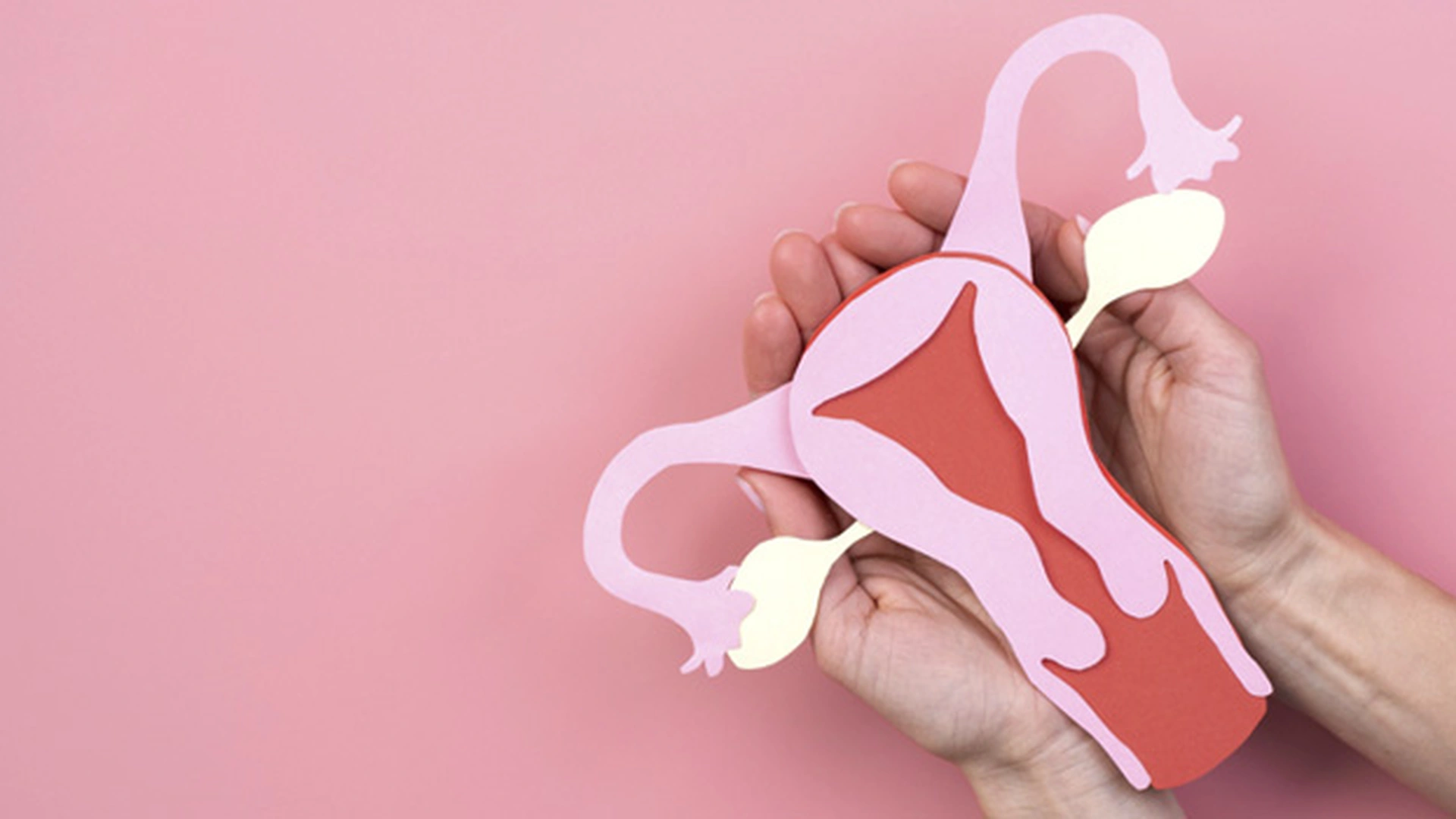

If you have never undergone treatment for any infertility issue, it is likely that your doctor has never asked you about your luteal phase. However, if you are trying to get pregnant, it is important to know that this is a fundamental part of the menstrual cycle.
What is the luteal phase in a woman?
The luteal phase, also known as the luteinic phase, is the last phase of the menstrual cycle, occurring between ovulation and the start of the next menstruation. After releasing the egg, the follicle transforms into the corpus luteum, which produces progesterone, a hormone essential to prepare the uterus for a possible pregnancy.
To better understand what the luteal phase is, you first need to know that the female cycle goes through different stages.
The luteal phase, also called the luteinizing phase, is the stage between ovulation and the menstruation of the following cycle. After ovulation, the mature egg is released, and its follicle transforms into the corpus luteum. In regular cycles of about 28–30 days, ovulation usually occurs on day 12, 13, or 14.
After ovulation, as the follicle transforms into the corpus luteum, the hormone progesterone is synthesized. This converts the uterine endometrium into a suitable environment for the embryo, which usually implants 5–7 days after ovulation.
Luteal phase symptoms – what are they?
During the luteal phase, various changes occur in a woman’s body. Recognizing these signs or symptoms can help increase the chances of becoming pregnant.
It is important to know that in women with regular cycles, ovulation occurs in the middle of the cycle. For example, if the cycle lasts 28 days, ovulation will take place around day 14.
-
Some women notice mild to moderate pelvic pain during ovulation, caused by irritation from the follicular fluid in the peritoneum.
-
During ovulation, there is an increase in cervical mucus, often described as having a “raw egg white” appearance. This change helps sperm travel up to the fallopian tube, making fertilization possible.
-
The rise in the hormone progesterone around ovulation also leads to an increase in basal body temperature. To detect this, women must measure their temperature every morning at the same time throughout the cycle. An increase of about 0.5 °C usually indicates ovulation.
Common luteal phase symptoms
During this phase, the body experiences several hormonal changes. Recognizing these luteal phase symptoms can help identify your fertility window:
-
Increase in basal body temperature (0.3–0.5 °C)
-
Tender or swollen breasts
-
Abdominal bloating
-
Mood changes or irritability
-
Tiredness or general fatigue
-
Mild pelvic pain
-
Changes in vaginal discharge (thicker or whitish)
-
Increased appetite or heightened sense of smell
-
Sleep disturbances
-
Acne outbreaks
-
Headaches
💡 Many of these symptoms also overlap with the early signs of pregnancy, which is why they are often confused.
When is the luteal phase?
The luteal, or luteinizing, phase begins right after ovulation, which generally occurs around day 14 in a typical 28-day menstrual cycle. During the ovulatory phase, a mature egg is released from the ovary and moves toward the fallopian tubes, where it can be fertilized by sperm. The luteal phase starts immediately after this process and continues until the beginning of the next menstrual period.
How long does the luteal phase last?
When does the luteal phase occur and how long does it last?
This phase begins immediately after ovulation, which occurs around day 14 of a regular 28-day menstrual cycle, and continues until menstruation.
-
Why is it key? The progesterone produced allows the endometrium to be ready for embryo implantation.
-
Normal duration: between 12 and 14 days.
-
Abnormal durations: if the luteal phase lasts fewer than 10 days (short luteal phase), it may make pregnancy more difficult.
💡 If you have doubts or experience significant changes in your menstrual cycle, it is recommended that you consult a healthcare professional.

Can you get pregnant during the luteal phase?
The luteal phase is not a fertile period, since ovulation has already occurred. However, if you had unprotected sexual intercourse during the fertile days before ovulation, sperm could still fertilize the egg, which may result in pregnancy.
How to know if you are in the luteal phase?
You can detect it through:
-
Basal body temperature: If it remains elevated for several days, you are in the luteal phase.
-
Ovulation test: After a positive result, the luteal phase begins the following day.
-
Menstrual calendar: If your cycle is regular, you can estimate ovulation and, therefore, the start of this phase.
-
Physical symptoms: Such as those mentioned earlier.
Main problems in the luteal phase
The progesterone released by the corpus luteum must be present in the right amount and for an adequate duration (at least 10–11 days) to ensure the endometrium becomes a receptive environment for embryo implantation.
Clinically, some patients experience light spotting in the second half of the cycle; others present with irregular cycles, and many are completely asymptomatic. Diagnosis can be carried out by measuring blood progesterone hormone levels and, in some cases, by studying the endometrium through a biopsy to confirm its proper transformation for implantation (secretory endometrium).
Treatment usually involves supplementing with progesterone, administered orally, vaginally, or even subcutaneously, during the luteal phase of the cycle.
FAQs about the luteal phase in women
How can I lengthen the luteal phase naturally?
To naturally lengthen the luteal phase in women with a short luteal phase, it is recommended to maintain a healthy lifestyle that includes proper stress management, a balanced diet, and adequate sleep. Additionally, you may consider consuming vitamin B6 and herbs such as vitex. Moderate exercise and avoiding excess caffeine and alcohol can also help. However, the best option is to consult a healthcare professional who can evaluate your specific case and provide appropriate guidance.
Can I get pregnant during the luteal phase?
Yes, it is possible to get pregnant during the luteal phase of the menstrual cycle, although the probability is lower compared to the follicular phase. During the luteal phase, the egg is available for fertilization for a short period, generally 12 to 24 hours. However, sperm can survive in the female reproductive tract for several days, so if unprotected sex takes place in the days leading up to ovulation, sperm may be present and fertilize the egg when it is released.
Can I use an ovulation test to know my luteal phase?
Yes, ovulation strips or tests are useful for detecting the luteal phase. These disposable strips analyze luteinizing hormone (LH) in urine, which increases just before ovulation. A positive result indicates fertile days, signaling the ideal time to have intercourse. For greater accuracy, the manufacturer’s instructions should be followed, and usage depends on menstrual regularity: typically starting around day 12 for regular cycles, or earlier, around day 8 or 9 for shorter or irregular cycles. The strips show a control line (C) and a test line (T); when the T line is positive, it indicates ovulation and peak fertility.
Book a free consultationDo you have any questions or need more information?
At Fertility Madrid, we specialize in treatments such as egg donation, in vitro fertilization, and artificial insemination, among others.
Do not hesitate to contact our fertility clinic professionals — they will answer all your questions with no obligation.




